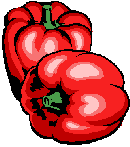
Also call: Sweet Corn, Maize,
Indian Corn
 | DESCRIPTION
|
A member of the grass and wheat family. It has a milky
pulp kernels that grows on the cob, and the cob is cover by layers of
fibrous green husk.
 | HISTORY AND ORIGIN
|
Originated in America, could have been first cultivated in
Andes by the Peruvian Indians. Its correct name is Maize.
 | BUYING AND STORAGE
|
Select fresh green husks with dark coloured silk and plump
kernels. Always but Corn with the husk still attached, once the husk is
remove the sugar content in the Corn changes to starch. Avoid dry,
yellow husk, and small shrinking kernels. Use fresh Corn as soon as possible
for the best flavour. Refrigerate for up to 2 days.
 | PREPARATION AND USE
|
Remove husk and silk just before cooking. Boil, grill,
barbecue or microwave. Can be used in soup, chowders, casserole, fritters
and salads.
 | NUTRITIONAL INFORMATION
|
Excellent source of vitamin C, good source of fibre,
folate and phosphorus. A Corn is actually the seed of a type of grass and
its class as a cereal. Therefore it contains high in protein and vitamin B.
 | MAJOR NUTRIENTS
|
- SERVING SIZE: 100 grm
* ENERGY:
388
kj
* CALCIUM:
* PROTEIN: 4
grm
* VITAMIN A:
* FAT:
1 grm
* VITAMIN B:
* CARBOHYDRATES:
16 grm * VITAMIN C:
7.1 mg
* DIETARY FIBRE:
5 grm
* SODIUM:
3 grm
* IRON:
*
PHOSPHORUS:
88 mg
 | VARIETY
|
GOLDEN SWEETCORN: Has a golden yellow kernels
and commonly available.
ORNAMENTAL INDIAN MAIZE: Has a mixture of
black, red, brown, yellow and white kernel. Generally is not for eating but
for ornamental use because of the excellent shelf life.
POLKA DOT CORN: Has a golden yellow and white
kernels creating spotted and dotted affect. Sweet edible kernels.
|




